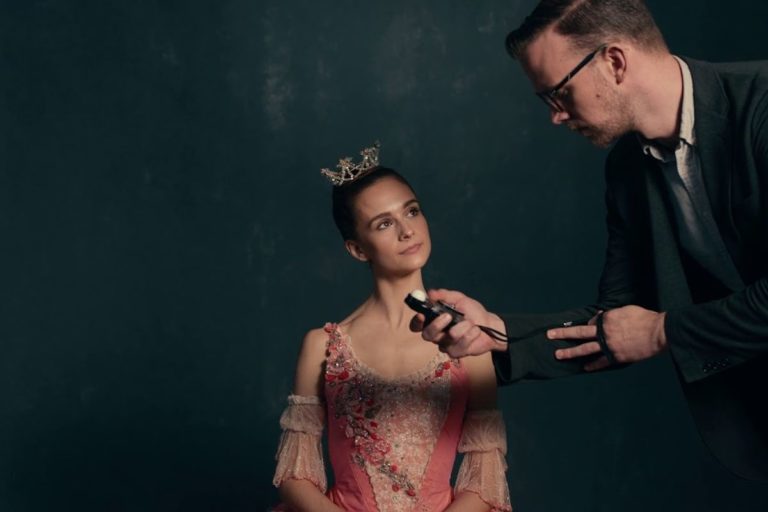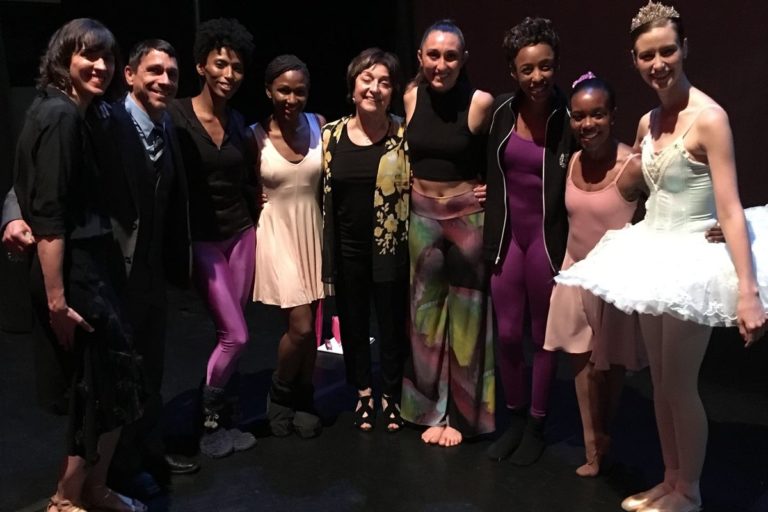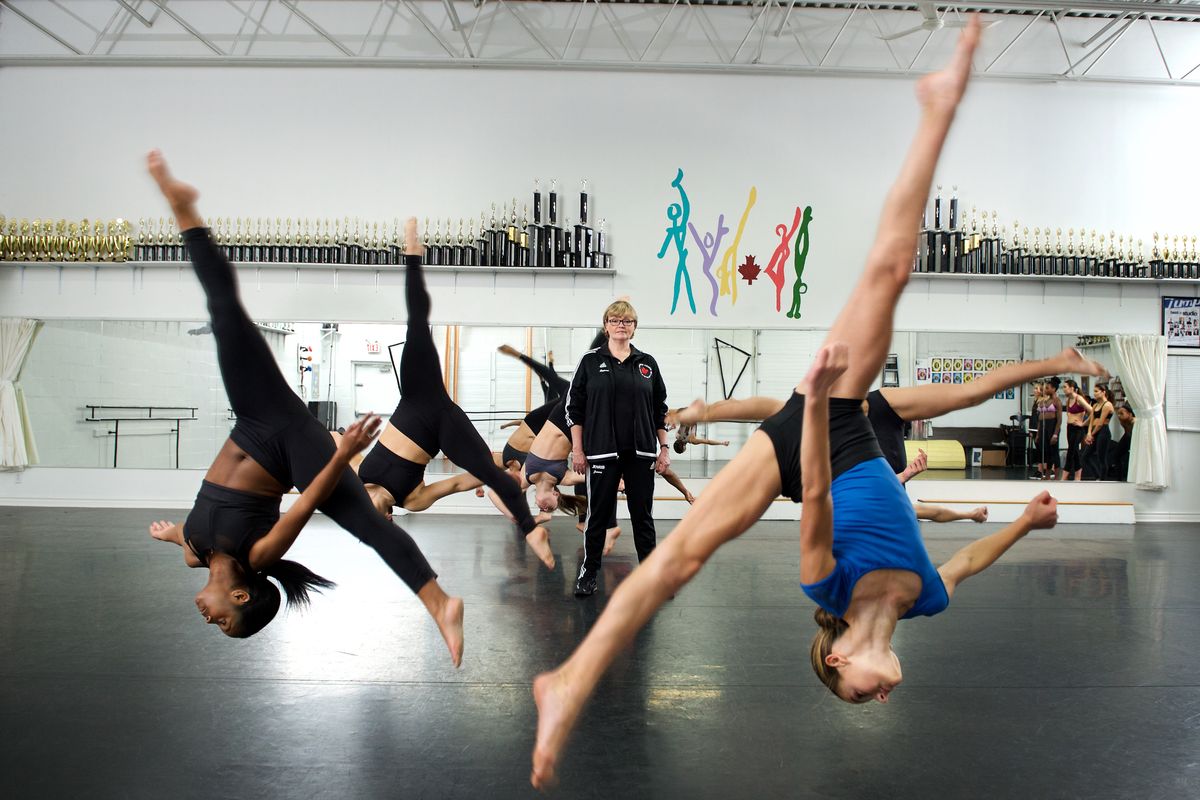
Four incredible educators: Joanne Chapman, Claudio Muñoz, Pamela VanGilder and Kathleen Isaac foster their students’ love of dance, whether instilling artistry, offering rigorous training or giving special needs students an outlet through movement.
Joanne Chapman
Keeping it all in the family in Ontario
If you’d told the teenaged Joanne Chapman that her future lay in owning a studio, she’d never have believed you. After all, she only started teaching classes—as a high school junior, out of her parents’ home in Ontario—to fund her own dance training. But just before she left for university to study psychology, she had an unexpected change of heart. “I said to my mom, ‘I don’t think I can give up teaching,'” says Chapman.
Now, 42 years and thousands of students later, she finds it difficult to envision any other path. She’s outgrown three spaces and opened a second studio (which she later sold to a former student), all while cultivating a reputation for producing well-rounded dancers, demanding excellence and taking no guff from anyone.
Competition has always been a big part of her studio, even as far back as year one. Chapman finds it a great stimulus for her dancers to work harder. “When they see someone else who does what they do,” she says, “it inspires them to be better.” But her approach to competition has always been unique: She doesn’t hold auditions to select her team. Instead, she and her staff invite students to participate, after careful observation, and it’s never about winning. “I tell my students, ‘I never remember what you win. I only remember how hard you worked to get there,'” she says. “I’ve never, in 42 years, said, ‘Go out there and win.'”
“It’s always been more about, ‘What are the kids learning from being at a competition and working with this choreographer? Is this going to benefit them in the long run?'” says Chapman’s older daughter Dana, who helps run the competitive program.
Chapman credits much of her success to her family—her husband Barry is the office manager, and her younger daughter Jessie co-directs the comp team with Dana. The ripple effect of such a family-run business is that, despite its size—600 students—the studio feels like a family. “Sometimes studio owners get really wrapped up in the competition scene and forget they’re raising kids,” says Jessie. “We get a lot of comments from other people at competitions, when the kids are crawling all over us and we’re doing their hair. They’ll say, ‘You guys really are one big family.'”
Sometimes, that sense of family expands in unexpected ways. Sonia Metheral, a student of Chapman’s from the studio’s earliest days, lost both her father and mother to cancer before she was 19. “I went through a difficult time,” says Metheral. “I don’t remember a lot. But I do remember making a phone call, and Barry came to the house and picked me up. Joanne let me live with her—she gave me a room in her home.” Metheral, who now owns her own studio in Canada, knows it must’ve been a sacrifice for the Chapmans to take her into their home. “I was a difficult teen, struggling with a lot of stuff,” she says. “But there’s so much love in that house—so much warmth around Joanne.”
For Chapman, it was never a question of if. “That’s what you do,” she says, “when someone needs you.” —Rachel Rizzuto
 Claudio Muñoz, here with Houston Ballet II dancer Jack Thomas, places equal emphasis on technique and artistry. Photo by Cameron Durham, courtesy of Houston Ballet
Claudio Muñoz, here with Houston Ballet II dancer Jack Thomas, places equal emphasis on technique and artistry. Photo by Cameron Durham, courtesy of Houston Ballet
Claudio Muñoz
Training the next generation of ballet stars in Houston
Houston Ballet’s Claudio Muñoz claims he’d be a chef if he weren’t a ballet master and often uses food metaphors to describe the learning process. “It’s not enough to have the right ingredients,” he says. “You need to know how to put them together.” Muñoz has been putting dancers together at Houston Ballet Academy for 17 years, with a stunning record of former students in the company. From principals to corps de ballet members, more than half the company has spent time in Muñoz’s classroom. He beams with pride when he thinks about the mark he has made on the institution. “When the audience claps, some of those are for me,” he says with a sly smile.
The Chilean-born dancer-turned-teacher is known for his humor, warmth and ability to draw the best out of a dancer. “Fear has to remain on the outside,” he says. “We must be rid of the fear of failing. When we fail, we learn.”
Houston ballet principal Connor Walsh recalls that very experience during his first try at contemporary partnering. “I tried to hide, but Claudio brought me to the front of the class. I was terrified. He made it OK not to know how to do something, to be comfortable in the learning process.” Walsh credits Muñoz’s teaching as one of the reasons he stayed at Houston Ballet. “He taught me to self-correct,” says Walsh. “He teaches the mind as well as the body—to always see the big picture, to engage your technique and your artistry.”
Muñoz has fought tirelessly against the fixation on legs in today’s young dancers, working hard to shape their port de bras to create polished performers. “This is what fills out the stage,” he says. “It’s through the port de bras that the story gets told.” He’s also a stickler for artistry. “Technique is not dancing,” he says.
An impressive list of his students has been selected to compete at Prix de Lausanne, a respected international competition for young dancers. Several have returned home with honors, including Madison Young, who won second place this past year. Muñoz emphasizes the experience over winning. “I tell the students to relax and have their inner light on at all times,” he says. “Let people be drawn to you. Be calm and have fun.”
Like any good teacher, Muñoz knows he owes much to his students. “What’s extraordinary is how much I have learned from them over the years,” he says. “If they don’t understand something, I need to find a new way to explain it.” —Nancy Wozny
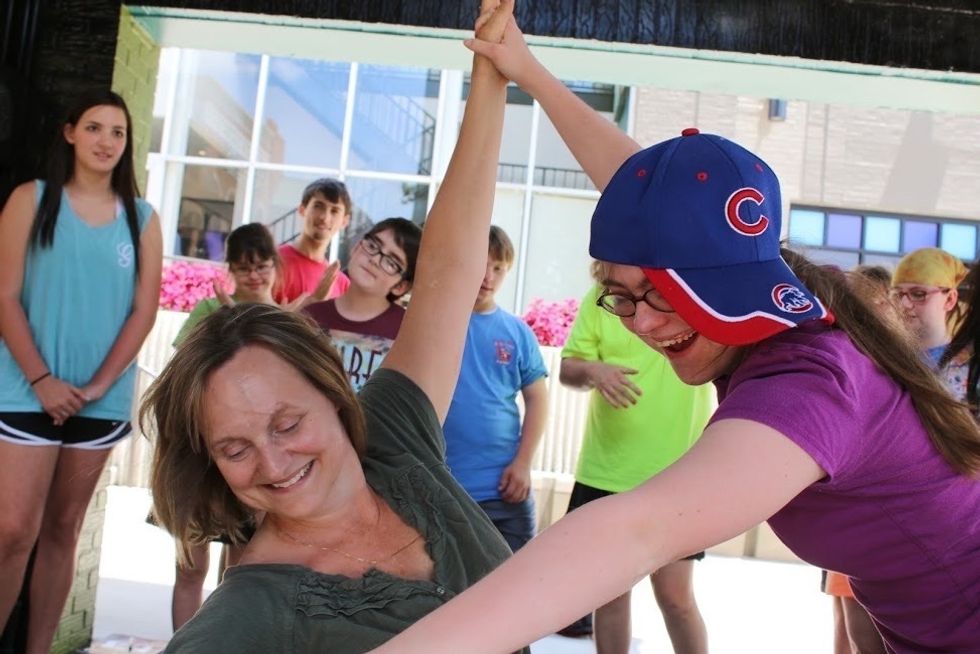 After her daughter Sarah (pictured here with her mom) was born with Down syndrome, Pamela VanGilder shifted her focus to special needs education. Photo courtesy of VanGilder
After her daughter Sarah (pictured here with her mom) was born with Down syndrome, Pamela VanGilder shifted her focus to special needs education. Photo courtesy of VanGilder
Pamela VanGilder
Teaching life skills to special needs students in Memphis
Pamela VanGilder was working as Ballet Memphis’ educational outreach director, helping teachers bring dance into their classrooms, when her daughter Sarah was born with Down syndrome. As she watched Sarah grow, VanGilder became increasingly inspired by her developmental pathway and began to delve into special needs education. By the time Sarah was 5, VanGilder had shifted her educational focus completely. “Having a child with disabilities and seeing how she was growing informed me quite a bit,” she says. “I try to meet kids where they are and build from there.”
VanGilder spent the past decade at the Madonna Learning Center, a private school in Germantown, Tennessee, until her retirement last year. There, she helped children and young adults with Down syndrome, autism, cerebral palsy and other disabilities develop creativity, coordination and communication skills through dance.
“Pam is a visionary,” says Anne Froning, VanGilder’s frequent collaborator. “She cannot not see where things need improvement. If she feels it will enhance the lives of her students, she’s going to find a way.”
VanGilder feels her students’ victories keenly, because even the smallest success can be a breakthrough. “One student had a hard time finding where his body was in space,” she says. “When he saw an empty room, the first thing he wanted to do was run up against a wall because it gave him feedback to stop.” To help the boy anchor himself, she used the environment, a school cafeteria, to her advantage. “We would do locomotor movement and then stop and put our hands on one of the cafeteria tables to ground us. Then we would make a shape and hold it with our bodies while holding on to the table. That was this little boy’s place-maker.”
That ability to tap into her students’ creativity and spirit is one of her greatest gifts as an educator. With special needs children, “one has to look beyond what one might see from the outside and really see what talents they have, what they’re trying to tell you,” says Froning. “Pam is able to see what their strengths are and allow them to express themselves.”
Her contribution to education hasn’t been limited to the special needs realm. She’s established several children’s arts programs, like Ballet Memphis’ Discover Dance program and Wolf Trap Foundation for the Performing Arts’ stART smART program, both focused on bringing dance to preschoolers. She also served on the National Coalition for Core Arts Standards dance task force, helping write the national standards for public school dance education.
She’s proud of her impact on individuals of all ages and abilities. “Kids I taught at Madonna for all of those years developed an awareness of themselves in space and an awareness of how they could move,” says VanGilder. “They developed a creativity about the way they moved.” —Rachel Caldwell
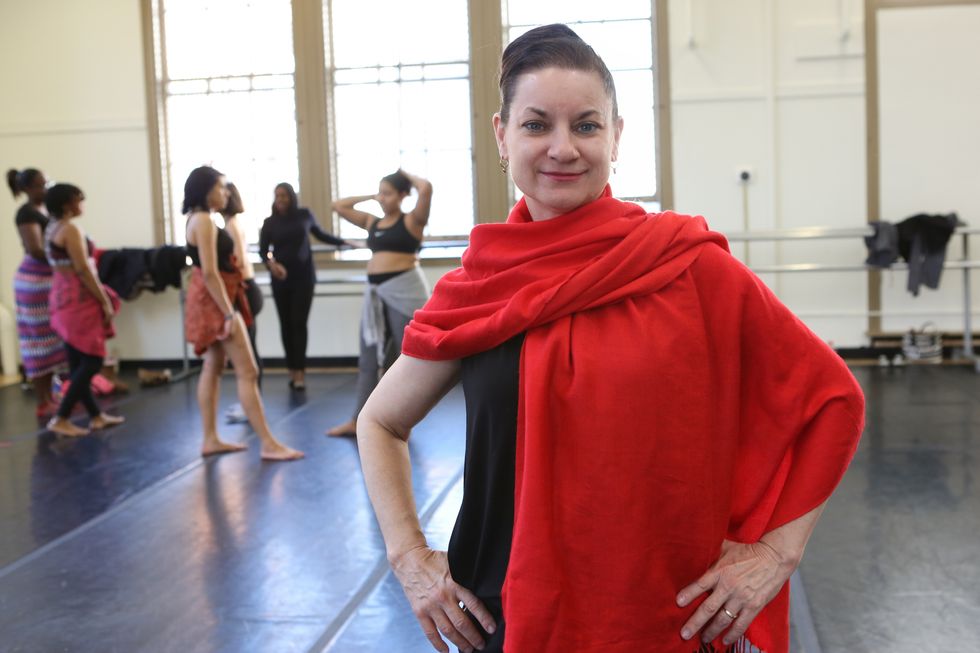 Kathleen Isaac transforms artists into K–12 educators, imparting rigor and joy. Photo by Julie Lemberger, courtesy of Isaac
Kathleen Isaac transforms artists into K–12 educators, imparting rigor and joy. Photo by Julie Lemberger, courtesy of Isaac
Kathleen Isaac
Training superstar K–12 educators in New York City
Kathleen Isaac’s first full-time teaching job was at a middle school in a rough Bronx neighborhood, where street drug deals and dirty needles were commonplace. She would pray daily, “Please, God, help me know what to do with this class.” Swing dance, as it turned out, was the key to gaining her reluctant students’ interest. “The boys got to lift the girls,” she says, “and that was the ticket.”
Her persistence and unique approach to trouble-shooting impressed Joan Finkelstein, then-director of dance for New York City public schools. “She has stick-to-it-iveness,” says Finkelstein. “She finds the most creative way to deal with the challenges, either head-on or by going around them.”
Now the director of Hunter College’s Arnhold Graduate Dance Education Program, Isaac draws on her two decades in public schools to train K–12 educators. “It’s a certification program,” she explains, “so they have to know the language of education, but at the same time, you don’t want them to feel like they’re not artists. Our goal is to take highly trained dancers and develop them into effective educators. Students in public schools deserve that.”
She has shaped the program accordingly. Students have room to stretch their creative legs: A guest choreographer has been brought in to create work on the participants, who, in turn, create work on each other and on K–12 dancers—all showcased in a fully produced spring performance. It’s a rigorous program, one that Isaac spearheaded from the ground up. She’s particularly proud of each graduate (40 so far) who has passed the edTPA, a demanding teaching assessment required by the State of New York for certification.
“New York State teacher education has become much more subject to scrutiny,” says Jennifer Tuten, Hunter’s acting dean of curriculum and teaching, “and Kathleen has worked very hard with her students to prepare for that assessment. She really wants them to go out in the world and be superstars at what they do.”
One of Isaac’s achievements during the first five years of the program has been to build the iDanceEd initiative, a website where students share ways they’ve applied the use of the digital tools and technology in their teaching practice. She also helped the effort to separate dance from the music department as a free-standing entity at Hunter.
“The main thing I want to impart to my graduate students is that as difficult as teaching is, you must maintain joy,” she says. “And that joy comes from knowing how to effectively plan—preparing your classroom for instruction that supports all students.”

